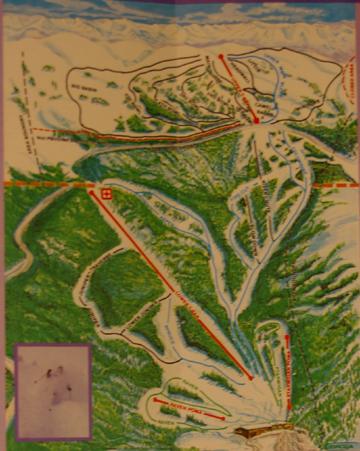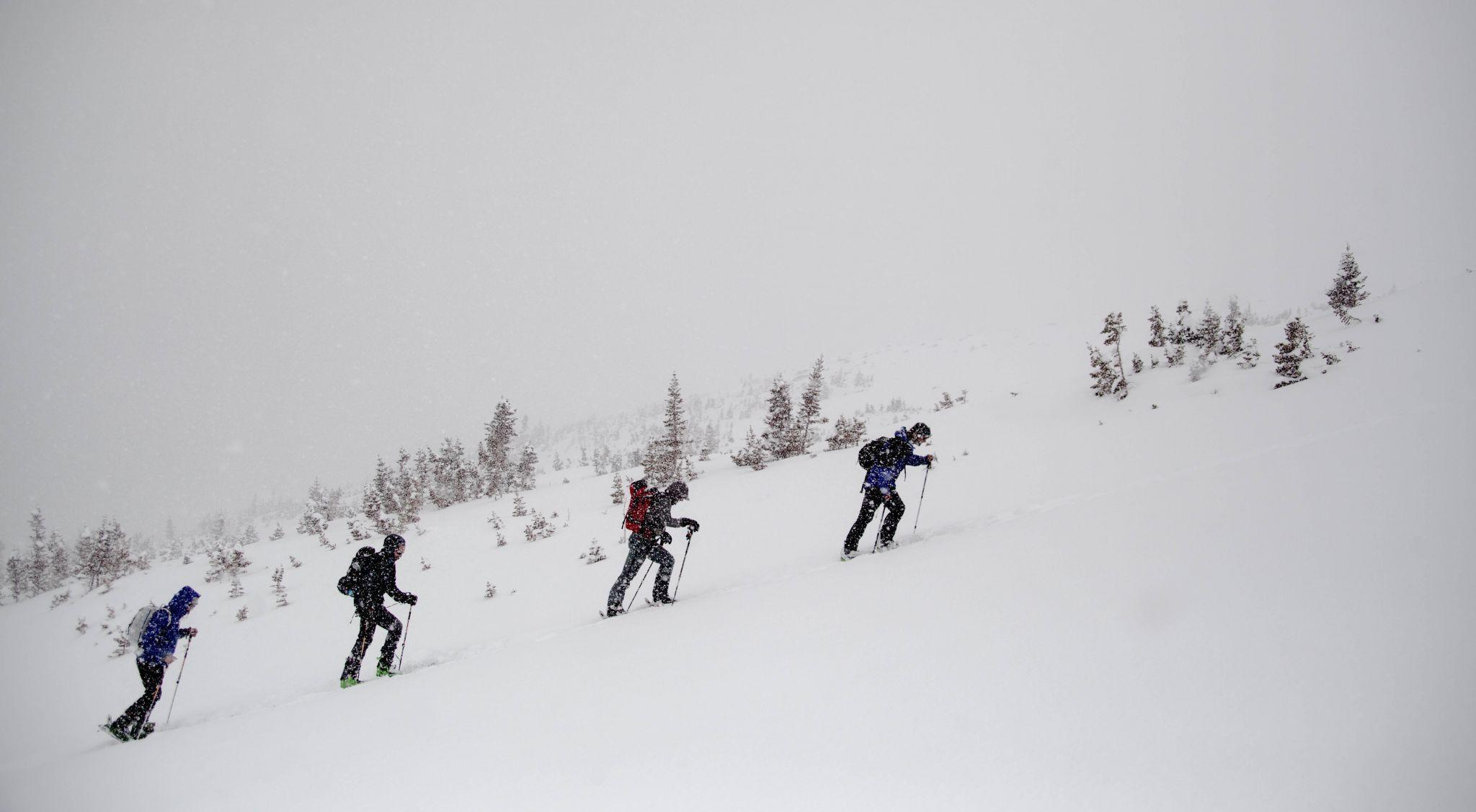
With resorts across the state closing, and summer still far around the corner, backcountry skiing is in its prime. However, with so many ski resorts in Colorado, it’s easy to get stuck thinking inside the boundaries. People often forget that Colorado is a backcountry playground. Fresh turns are just waiting for eager skiers and boarders.
Few places offer a better backcountry experience than Hidden Valley in Rocky Mountain National Park. By late season, the area accumulates a base layer and is often abound with powder. Hidden Valley has everything needed for the perfect backcountry recipe — easy access, incredible views and safe terrain.
That being said, backcountry skiing is inherently dangerous and should be undertaken with caution. The proper training in avalanche safety (e.g., ARES 1 course) and the proper equipment (e.g., a beacon, shovel and probe) are essential. Also, always check the current avalanche conditions for the area at the Colorado Avalanche Information Center’s website before departing on your trip. These tools, as well as proper planning and risk management, will ensure a safe and fun experience.
History

Hidden Valley has a long history of skiing. In 1955, much of the high-mountain valley was turned into a ski area, complete with lifts and a lodge. Loved by locals, it was a bustling winter playground in its heyday. The ski area was eventually phased out, with the infrastructure being torn down by the National Park Service in 1991. However, thanks to resolute backcountry enthusiasts, the tradition of skiing Hidden Valley did not end with the resort’s closure. Today, the area officially serves as the park’s only authorized sledding area, which is located next to the parking lot. Unofficially, it is the park’s backcountry playground.
Location
Located in Rocky Mountain National Park, Hidden Valley is easily accessible to the northern front range. From Fort Collins/Loveland, it is an easy drive up Thompson Canyon, also known as Highway 34. From Boulder, the drive follows Highway 36 to Estes Park.
Highway 34 provides access to the northern park entrance, while Highway 36 provides access to the southern entrance. Both routes merge inside the park to create Trail Ridge Road, also known as Highway 34. From that point, it’s about a 20 minute drive to the entrance of the Hidden Valley parking lot, which you’ll see on the right side, or the west side, of the road.
Description

(Photo by: Nevin Fowler)
The Hidden Valley backcountry area starts in the trees and extends far above the tree line. The upper portion of the ski area provides sweeping views of the park and the front range to the east. To the south, Longs Peak stands resolute against the skyline.
The best skiing is found in this upper portion of the ski area. Much of the center of these upper slopes are under 30 degrees, making them great areas to ski when avalanche danger exists.
To access the upper slopes, exit the parking lot to the north, just past the bathrooms. A snow-packed trail leads west down a large path through the trees. This path follows the scar in the forest that was created by the old ski lift. Although the snow on the path is packed, snowshoes or skins are strongly recommended.
After approximately five minutes, the trail splits. The left trail provides access to the southern slopes while the right trail provides access to the center and northern slopes. The right trail is the most common route, as it provides access the most terrain and the less avalanche prone slopes.
Right Path: Center and Northern Access
Continuing for approximately 45 minutes, the trail crosses an upper portion of Trail Ridge Road. This road is closed during the winter and has no traffic other than the occasional snow plow. Crossing the road marks the entrance to the upper slopes.
Laps are best done from this location, as it is the best spot to re-apply skins or switch to snowshoes. Climb the slopes, enjoy the ride down and repeat!
Left Path: Southern Access
This path is not as popular, as it accesses less terrain and the slopes are steeper. This path crosses Trail Ridge Road to the east of where the right trail crosses.

(Photo by: Nevin Fowler)
Even though the upper portions hold more avalanche danger than some of the center slopes, this side has great tree skiing lower down.
Enjoy
Hidden Valley is a great place to spend a day off when resorts are closed, or when I-70 is congested with weekend skiers. However, even with the area’s relatively low avalanche danger, it is important to know the risks involved with backcountry winter sports. With the right gear and knowledge, Hidden Valley is a playground for winter sports. Check out the Climbing Life or Boulder Outdoor Center for information about the area.
Collegian Blogger Nevin Fowler can be reached online at blogs@collegian.com, on Twitter @nevintfowler or on Instagram @nevintfowler.




